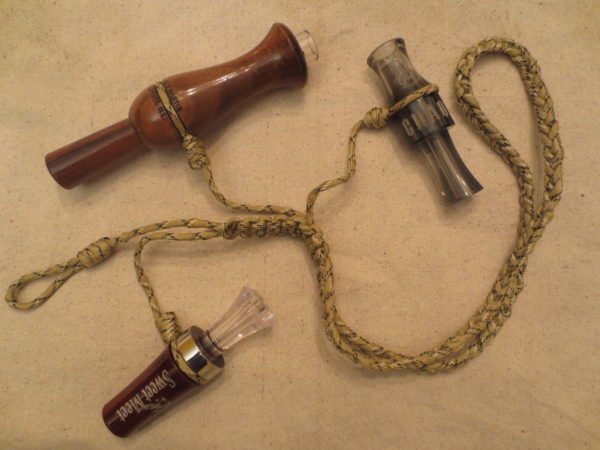
Words by Sam Terrell
The first difficult word I ever learned was gregarious. It’s an adjective with two definitions. The first is in reference to people being fond of company, and the second is in relation to animals living in flocks or loosely organized communities. As a duck hunter coming from a family out of New Orleans, the second meaning has vital importance.
Ducks are as sociable as people, they seek connections with others and communicate specifically about food, friends, and danger. I spent hours when I was younger talking with my uncle Tim and his close friend Jim about how to use calls and decoys to convince these birds that the water in front of our blind was safe to land in.
I found out early that ducks, just like people, are gregarious. They want good food, good friends, and a place to relax.

Calling
If you really want birds to come down out of the sky and into your decoys, learning to call is going to be supremely important. When it comes to choosing a call, if you have never used one before, there are quite a few companies that produce entry-level calls for nominal prices.
Some even come in package deals that include the recordings of what various calls should sound like so you can practice. Practice is going to help really polish the way your calling sounds. It’s important to note that a duck call is a tool just like a gun. Using your tools properly will help bag your daily limit, while improper use will keep birds out of range.
When people first start calling there is a tendency to “overcall” or get excited and call too aggressively. This has a negative effect. Calling needs to be done with distinct intentions: get the birds’ attention, bring them in close, and convince them to land.
To do this effectively, you should have had a group of practiced calls to tap into. For me, my top five are the quack, greeting call, feeding call, comeback call, and hailing call.
The Quack
The quack is the essential first step of duck calling, mastering the basic quack will help you move forward in your calls as well as aid you as a duck hunter. You can blend individual quacks into a mixture of calls that will help add realism to your calling. There should be a sharp and clean ending to a proper quack, focusing on a crisp “-CK” rather than a soft “qua-“ sound.
The Greeting Call
The greeting call is a welcome invitation to birds flying by at a distance. The structure of the call is a string of sounds five to seven notes long using a “knack-kanck-kanck-kanck-kanck” pattern. The notes should be blown in an even rhythm sounding very certain and steady. You can use a greeting call to get birds interested in your decoys as they start towards your blind and come into view.
Feeding Call
The feeding call is a fast, garbled sound that is produced by making a ‘tika-tika-tika’ pattern. Using a feeding call adds variety to your calling and makes decoys sound happy and alive. Ducks have clearer feeding calls when they are flying than they do when they are in the water. Use speed and volume control to help keep birds interested without getting too loud to scare them. The quack can also be inserted to break up a feeding call.
Comeback Call
The comeback call is used when birds are not accepting your greeting call or they are not responding well to the calls you are providing. This a speedy, urgent, and simple call making a succession of sounds similar to ‘quanckanck-kanck-kanck-kanck.’ Make this call fast and with force in a sting of four to seven notes. Use this to help birds turn back and come down into your decoys.
Hailing Call
Finally, the hailing call is one to use sparingly. This is a loud, in-your-face call that helps bring high-flying birds down using a long ‘AAAAICK’ sound twenty or more times in a succession, fading off as you reach the end. This string of ‘AAAAICK’s should start slower than it ends, speeding up as you run out of breath so the sounds start blending together slightly.
If you practice these five calls, you will have a great start to your calling arsenal. There are more specific calls that can be purchased later on as your involvement with duck hunting increases that impersonate geese, whistling ducks, and other specific duck sounds.
To simply get started, buy a call you like the look and feel of, one that is priced right for you, and one that makes you wish it was Fall. And if the birds are coming in, and you are wondering if you should keep calling or start shooting, put the call down and paint the sky with feathers.




